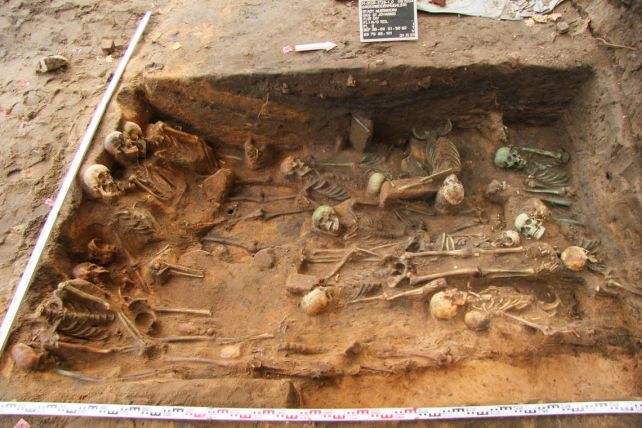Building a retirement home on a plague pit. Hmmm.
Archaeologists digging in the German city of Nuremberg ahead of the construction of a new retirement home have uncovered what may be the largest mass burial of plague victims ever uncovered in Europe.
Excavations are ongoing, but the centuries-old remains of more than 500 individuals have been unearthed so far, and the team believes there could have been as many as 1,500 people interred therein.
Precise dating is also yet to be performed, but tentative estimates suggest the eight plague pits were created around the first half of the 17th century. Some of the bones appear tinted green because for some time the site was used to dispose of waste from a nearby copper mill,
Spiegel reports.
"We will secure and archive all human remains that are found in the future construction areas,"
says Nuremberg Department of Heritage Conservation archaeologist Melanie Langbein and chief anthropologist Florian Melzer. "We currently assume that once the work is completed in the spring, this will be the largest emergency cemetery for plague victims excavated in Europe."
An unearthed section of one of the pits. (
In Terra Veritas)
Bubonic plague has been associated with many of history's most devastating pandemics, chiefly the
Black Death of the 14th century and the
Justinian plague that kicked off in the 6th century. Yet the highly contagious, flea-borne infection reemerged frequently in smaller outbreaks through the ages. Following the Black Death in Europe, local epidemics recurred
for around 400 years, ravaging cities. ...
https://www.sciencealert.com/giant-...-largest-mass-burial-site-ever-seen-in-europe

